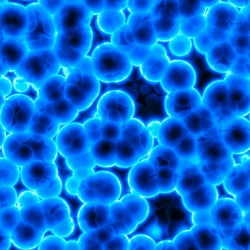 We have known for some time that certain chemicals mimic the action of hormones in the body and disrupt the endocrine system, causing wide ranging health problems. Over the last 70 years thousands of man made chemicals have been released into the environment. As much as 85% of these chemicals have never been tested for adverse effects on human health due to inadequate health and safety screening. Many of these chemicals are considered safe; however a small group have been identified as “endocrine disruptors”. Endocrine disruptors interfere with the function and metabolism of hormones in the body, including estrogen, testosterone, insulin, adrenalin, and thyroid hormones.
We have known for some time that certain chemicals mimic the action of hormones in the body and disrupt the endocrine system, causing wide ranging health problems. Over the last 70 years thousands of man made chemicals have been released into the environment. As much as 85% of these chemicals have never been tested for adverse effects on human health due to inadequate health and safety screening. Many of these chemicals are considered safe; however a small group have been identified as “endocrine disruptors”. Endocrine disruptors interfere with the function and metabolism of hormones in the body, including estrogen, testosterone, insulin, adrenalin, and thyroid hormones.
Some researchers are linking the massive increase in breast cancer, prostate cancer, early puberty, fertility problems and many other hormonally dependent diseases to environmental exposure to endocrine disrupting chemicals.
They are more common than you may realize – here are a few examples of endocrine disrupting chemicals that have a specific effect on fertility and the health of the reproductive organs. While some of them, such as DDT and PCBs have been banned for some time, they still persist in the environment and make their way into our food chain.
Chemical Name |
Sources |
Effects |
| Atrazine | Atrazine is a common herbacide, in Australia over 330 tonnes are used per year in farming, forestry, grain and cotton industries . It is banned in the European Union due due to concerns over ground water contamination | It has been linked with many hormonal problems including shortened lactation |
| Bisphenol- A (BPA) | BPA is commonly used in plastic products such as drinking bottles (including baby bottles) and in the lining of canned food and infant formula. | It is linked with early puberty, poly cystic ovarian syndrome, uterine fibroids, miscarriage and breast cancer |
| Cigarette Smoke | Both first hand and second hand cigarette smoke contain hundreds of harmful chemicals, including endocrine disrupting chemicals. More research needs to be done to fully understand how cigarette smoke effects hormone function. This is especially important as cigarette smoke is very common and is associated with many health problems. | It is linked with early puberty, impaired fertility, miscarriage and breast cancer |
| DDT (dichloro diphenyl trichloroethane) | This is a pesticide that was wide used in farming in Australia and around the world. It has been banned for many years now due to toxicity but still lingers in the environment | It has been linked with early puberty, impaired fertility, miscarriage, shortened lactation and breast cancer |
| DES (Diethylstilbestrol) | This is an oestrogenic compound that was orginally manufactured in the late 1930’s to prevent miscarriage. It is no longer used for this purpose due to health risks. | Associated with early puberty, poly cystic ovarian syndrome, endometriosis and breast cancer |
| Dioxins | Dioxins are the by product of manufacturing and incineration processes and are are incredibly pervasive found through out the environment and oceans. | Dioxins have been linked with many adverse health outcomes including hormonal conditions such as endometriosis |
| PBBs (Polybrominated biphenyls) | These are used as a flame retardant in electrical appliances, textiles, plastics and other products. They are no longer used but continue to be present as an environmental toxin | Linked with early puberty |
| PCBs (Polychlorinated biphenyls) | Are compounds that were used as coolants and insulation in electrical appliances, electrical wiring and for many other purposes. They were banned due to toxicity but continue to be present as an environmental toxin | Associated with early puberty, impaired fertility, endometriosis, shortened lactation |
| Phthalates | A family of chemical compounds used as in PVC (vinyl), cosmetics, fragrances and medical devices. | Linked with early puberty, impaired fertility and endometriosis |
* Information taken from Hormone Disruptors and Women’s Health: Reasons for concern

While this list focuses on the detrimental effects to women’s health, they are also thought to contribute significantly to men’s health problems. These include birth defects in male babies, impaired fertility (including poor semen quality and reduced sperm count) and certain cancers including testicular and prostate.
So what can you do to reduce your exposure?
- Buy organic whenever you can. If there was ever a good reason to eat organic – this is it! Food that is certified organic has been grown on land that has not had exposure to chemicals for at 7 years prior to planting and no harmful chemical herbicides or pesticides are used. Eating organic is a great way to ensure you minimize you exposure to chemicals and support a cleaner, greener planet.
- If the cost of organic produce is prohibitive for you, make sure you scrub your vegetables under running water to reduce pesticide residue
- Grow your own fresh vegetables and herbs – even a small balcony garden in pots can provide you with fresh produce
- Avoid heating or storing food in plastic containers or using plastic cling wrap over food
- Avoid plastic drinking bottles and if you are bottle feeding your baby always look for a BPA free certification, or just do what our mother’s did and use glass. Remember, early exposure is though to be most harmful
- When buying fresh fish,always avoid the larger species such as shark (flake) or sword fish, as thy are at the top of the food chain and bio-accumulate environmental toxins
- Cosmetics and toiletries contain many chemicals, choose the purest and most organic you can find
- If you are planning on renovating, again…. do your research. There are low toxicity paints and other products available
- Reduce your exposure to household chemicals, some of the old fashioned remedies work just as well as the new chemical products. Vinegar and water with a bit of elbow grease makes a good cleaner. There is lots of information on home made cleaners on line, so it’s worth researching
- Avoid cigarette smoke at all costs, even second hand smoke is damaging. If you smoke, get some support to quit and always protect your children from second hand smoke
 Detoxification Programmes
Detoxification Programmes
We are all exposed to environmental toxins and chemicals on a daily basis, whether you live in the country or the city. Supporting the body’s detoxification processes helps us to rid our bodies of chemicals and minimize the harmful effects of these toxic substances. There are many tests that help indicate your level of toxicity, including Hemaview Live Blood Analysis, Hair Mineral Analysis and urinary estrogen metabolite tests. These help us to ascertain your level of toxin exposure and how well your body is dealing with it. The detoxification programme itself is much less difficult to complete than people imagine, with fresh healthy food and nutritional and herbal support people feel fantastic after completing a detox!
If you are concerned about the effects of environmental toxins and would like to know more about avoiding exposure and minimizing the effects, or would like to find out what’s involved in our Detoxification Programme, book an appointment today.

